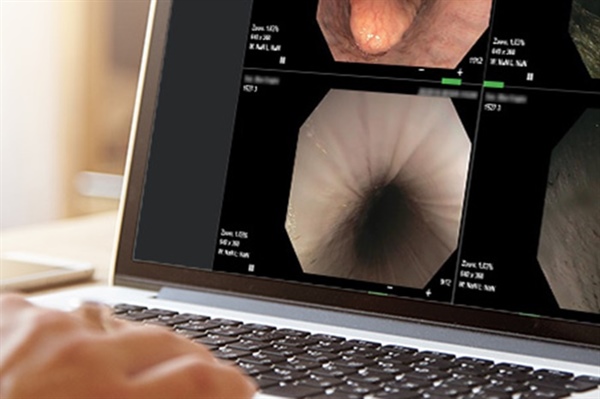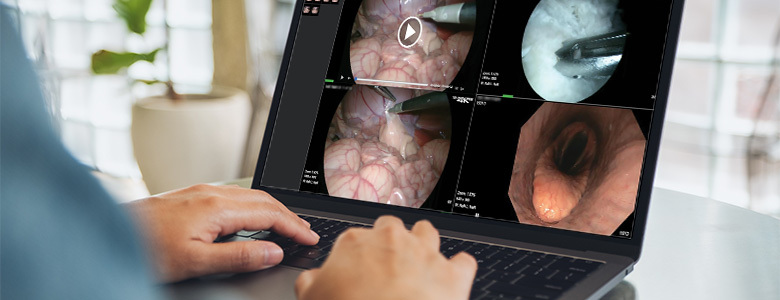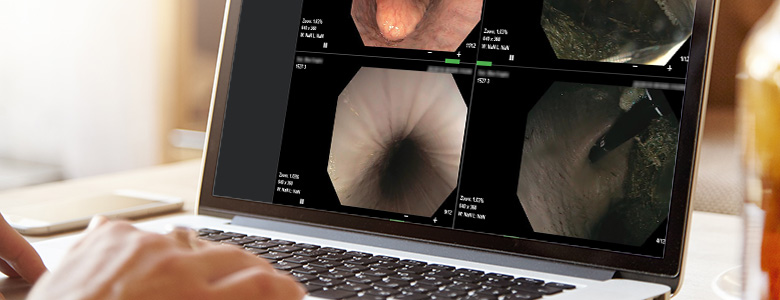What Is Cloud PACS & How Does It Revolutionize Medical Imaging?

Medical imaging is critical to modern healthcare, guiding diagnoses, treatment planning, and patient care. However, managing vast amounts of imaging data has historically challenged healthcare providers. Enter Cloud PACS (Picture Archiving and Communication System), a technological advancement that redefines how medical imaging is stored, accessed, and shared.
Whether you’re a radiologist, a hospital administrator, or a healthcare professional looking to enhance patient care, understanding Cloud PACS is key to keeping pace with the future of medical imaging. This article explores what Cloud PACS is, how it improves data accessibility and security, why it’s more efficient than traditional systems, and its cost and integration benefits.
Cloud PACS Improves Data Accessibility & Sharing
One of the standout features of Cloud PACS is its accessibility. Unlike traditional PACS, which rely on on-site servers, Cloud PACS stores data using cloud technology. This allows you to access medical imaging from any location — at the clinic, in your home office, or while consulting at a partner hospital.
Real-Time Collaboration Across Locations
Cloud PACS ensures healthcare professionals can seamlessly share images and reports. Multiple users can review and collaborate on the same imaging file in real time, offering critical insights that improve diagnostic accuracy.
For instance, in cases requiring a second opinion or a multidisciplinary approach, the speed and ease of sharing images can fast-track decision-making.
Faster Response Times for Better Care
When physicians can access imaging instantly, patient care improves. For instance, a radiologist can review an urgent CT scan from their mobile device within minutes of uploading it, expediting care decisions. This immediacy could be life-saving in emergency cases.
Enhancing Patient Experience
Cloud PACS also empowers patients to access their imaging easily via patient portals. This transparency fosters better communication between providers and patients and ensures continuity of care.

Security Features of Cloud PACS
Security is often a concern when adopting cloud-based systems, but Cloud PACS platforms are designed with robust safeguards to protect patient data.
-
HIPAA & GDPR Compliance: Cloud PACS providers, like CloudEndo, prioritize compliance with healthcare regulations such as HIPAA in the US and GDPR in Europe. This ensures patient information is stored and shared securely and meets the strictest standards.
-
Data Encryption and Authentication: Cloud PACS employs high-level encryption techniques to safeguard data in transit and at rest. Two-factor authentication, user access controls, and detailed audit trails ensure that only authorized personnel can view or modify sensitive information.
-
Disaster Recovery and Backup: Traditional PACS systems can be vulnerable to hardware failures or natural disasters, but Cloud PACS minimizes these risks with automatic backups and disaster recovery protocols. Your data remains safe and retrievable even during a breach or system failure.
How Does Cloud PACS Compare to Traditional PACS Systems?
Switching from traditional PACS to a Cloud PACS system is a significant transition, but the benefits outweigh the challenges.
Scalability
Traditional PACS relies on local servers that require expensive upgrades to accommodate growing data volumes. Cloud PACS, however, offers virtually unlimited storage that expands as your practice grows — no new hardware is required.
Cost-Effective Maintenance
On-site PACS requires regular maintenance, including software updates, hardware repairs, and IT staff. With Cloud PACS, these responsibilities shift to the cloud provider, freeing up your in-house resources.
Remote Management
Traditional PACS binds you to a physical location, whereas Cloud PACS offers flexibility. Whether you’re a smaller clinic with a satellite office or a major hospital handling remote consultations, remote management is seamless with Cloud PACS.
Enhanced Speed
Cloud PACS typically provides faster data transfer rates than traditional systems, enabling quicker uploads, downloads, and image sharing between healthcare professionals.

Cloud PACS Integration with Other Medical Software Systems
Integration is crucial for creating a seamless workflow, and Cloud PACS excels in this area.
DICOM & Video Integration
Platforms like CloudEndo simplify the integration process by allowing Cloud PACS to merge with DICOM (Digital Imaging and Communications in Medicine) standards and even medical video systems. This ensures all imaging-related data stays connected in one unified space.
EMR/EHR Compatibility
Cloud PACS can integrate seamlessly with Electronic Medical Records (EMR) or Electronic Health Records (EHR). This enables healthcare professionals to access imaging data directly from patient files, saving time and reducing the risk of errors.
Streamlined Workflow
Cloud PACS eliminates the need for cumbersome manual data transfers when integrated with other software systems. Findings, annotations, and imaging reports are automatically updated, streamlining administrative tasks and improving productivity.
Transform Medical Imaging with Cloud PACS Today
Cloud PACS is revolutionizing how healthcare professionals manage, access, and share medical imaging. It ensures clinical data is more accessible, secure, and cost-effective than ever before. Whether you're looking to reduce overhead costs, make faster diagnoses, or provide better patient care, Cloud PACS is a powerful tool to achieve these goals.
Platforms like CloudEndo take Cloud PACS to the next level by merging imaging systems, DICOM, and medical video into an integrated solution. By streamlining workflows and enhancing collaboration, these tools enable healthcare providers to allocate more time and resources to what matters most: saving lives.
If you’re ready to transform your medical imaging processes and improve patient care, explore what CloudEndo can offer. Schedule a demo today.